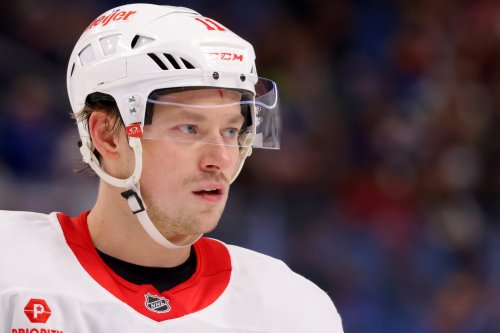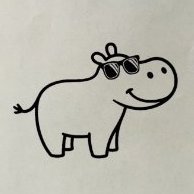
Devan Dubnyk has been a workhorse for the Minnesota Wild. Last season, he played in 67 games, the second most of all goaltenders in the NHL. The season prior, he set a franchise record of 38-straight starts on a hot streak that saw him finish third in Vezina Trophy voting. He totaled 58 games played that year despite starting as Mike Smith’s backup in Arizona, good for 14th overall for NHL goaltenders.
A lot of discussion about Dubnyk has been about his workload. On the one hand, it is a big advantage for a team to have a goalie that can perform well with a heavy workload. So long as he is playing well and staying healthy, coaches often like to ride the hot hand between the pipes. On the other, there is concern that overworking the goalie can burn him out and leave the team to twist in the wind.
Methodology
To explore this idea in greater detail, I’ve pulled even-strength goaltender stats from www.puckalytics.com for the past nine years (the farthest back their data goes) for all goalies that played at least 30 games.* I examined games played to even-strength save percentage across all goalies, and I also compared the top 20 goaltenders against the rest for every season. In total, there were 372 goalies in the study. From this data, I derived the correlation between even-strength save percentage and games played.
*In the shortened 2012-13 season, I used a minimum of 17 games which is the prorated equivalent. I prorated 2012-13 numbers when necessary for this analysis.
Correlation is a basic statistical measurement of the linear relationship between two sets of variables. Correlation coefficients, the number value for correlation, falls between a range of -1 to 1. -1 would mean that two variables are inversely related. An increase in one variable directly corresponds with a matching decrease in the other. A correlation coefficient of 1 means the an increase in one variable corresponds with an increase in the other. A coefficient of 0 would mean no relationship exists between the two variables. Increases and decreases to one variable wouldn’t see any corresponding movement from the other variable.
Those of you that have taken a statistics class probably remember learning that correlation does not equate with causation, i.e. just because two variables are correlated does not mean one caused the changes seen in the other. While it is true that correlation does not necessarily equate causation, sometimes a causal link is present. In the case of this study, I think it’s reasonable to assume a causal link may exist. Goaltenders that are overplayed start to get worn out; underutilized goaltenders get rusty.
Results
The Top 20 goalies across all seasons posted an average even-strength save percentage of 93.06%. The Rest posted an average even-strength save percentage of 91.43%. So the top goalies only outperformed the rest of their brethren by a little over 1.5% at even strength. A bigger difference is seen looking at games played. The Top 20 goaltenders averaged 53.28 games played per season while The Rest averaged only 46.34 games played for a difference of nearly seven games. This makes sense for two reasons. First, many of the goalies in The Rest group were backups. Second, goalies enjoying a strong season were likely earning more starts as a result.
So at a superficial level, it looks like more games played and higher save percentages are correlated. After all, the better performing goaltender group was also the group that played more games on average. However, looking a little deeper reveals a different and more nuanced story.
Among the Top 20 goalies, the correlation coefficient between even-strength save percentage and games played was -.06949. For a sample size of 180 data points, this level of correlation is statistically insignificant. For the NHL’s top goaltenders, the number of games played doesn’t seem to bear strongly on their performance.
Looking at The Rest, we see a very different result. The correlation coefficient for The Rest was .285048, which is statistically significant for a sample of 192 data points. It is hardly a smoking gun, but it does lend credence to the argument that goalies need to play to stay at their best. For goaltenders outside the Top 20, more opportunities to play is correlated to better play to a small degree.
Implications for Dubnyk and the Wild
Dubnyk has found himself among the Top 20 goalies in three of the six seasons he played at least 30 games. Fortunately for Wild fans, those include both of Dubnyk’s seasons in iron range red. In fact, Dubnyk was actually among the Top 10 in even-strength save percentage both years. Dubnyk was second overall last season in games played with 67. This puts him nearly 17 games ahead of the average games played among the Top 20 netminders (51.1) that season and approximately 14 games ahead of the average games played by Top 20 goalies across all seasons (53.28).
The season prior, despite starting as a back up and only being traded to the Wild in mid-January, he finished 14th overall with 58 games played. Even with the late start, Dubnyk played in about 3.5 games more than the average for Top 20 goaltenders that season (54.55) and nearly five games more than the overall Top 20 games played average across all years (53.28). That pace over an entire season would have been unsustainable, but it’s clear the Wild are willing to ride Dubnyk hard. There isn’t a significant negative correlation between the high number of games he’s played and his even-strength save percentage, so the Wild leaning so heavily on Dubnyk is unlikely to have harmed his performance.
Dubnyk’s heavy usage, however, does have possible negative implications for the Wild. Dubnyk isn’t the only netminder on the team. The positive correlation between games played and performance for The Rest group would seem to indicate that his heavy workload is depriving Darcy Kuemper, his back up, of enough games to find his stride. Kuemper fell outside of the bounds of this study due to insufficient games played, but long stretches of inactivity did not seem to help the young netminder. Kuemper finished last season with an even-strength save percentage of 92.02, good for 48th place among the 72 goalies that played a minimum of 200 minutes. The 2014-15 season was even worse for Kuemper, who had an even-strength save percentage of 90.81 which was 60th among the 73 qualifying goalies.*
*Much of that save percentage was earned before Dubnyk joined the Wild, so take this season’s figures with a grain of salt.
This analysis did not look at the effects of the regular season workload on playoff performance. It did seem that Dubnyk standing on his head during the 38-game run left him burnt out during the playoffs. Similarly, last season Dubnyk posted above average statistics during the regular season, but his playoff performance was decidedly below average. Multiple other factors could explain Dubnyk’s post-season declines, but a too-heavy workload leaving him worn out is worth consideration.
Part two will examine if there is an "ideal" number of games for a goalie to play in a season and look at the implications of this analysis for playoff performance.
Think you could write a story like this? Hockey Wilderness wants you to develop your voice, find an audience, and we'll pay you to do it. Just fill out this form.




.thumb.jpg.80e10d73a1a36997641eb63107ea3d25.jpg)



Recommended Comments
There are no comments to display.
Join the conversation
You can post now and register later. If you have an account, sign in now to post with your account.
Note: Your post will require moderator approval before it will be visible.